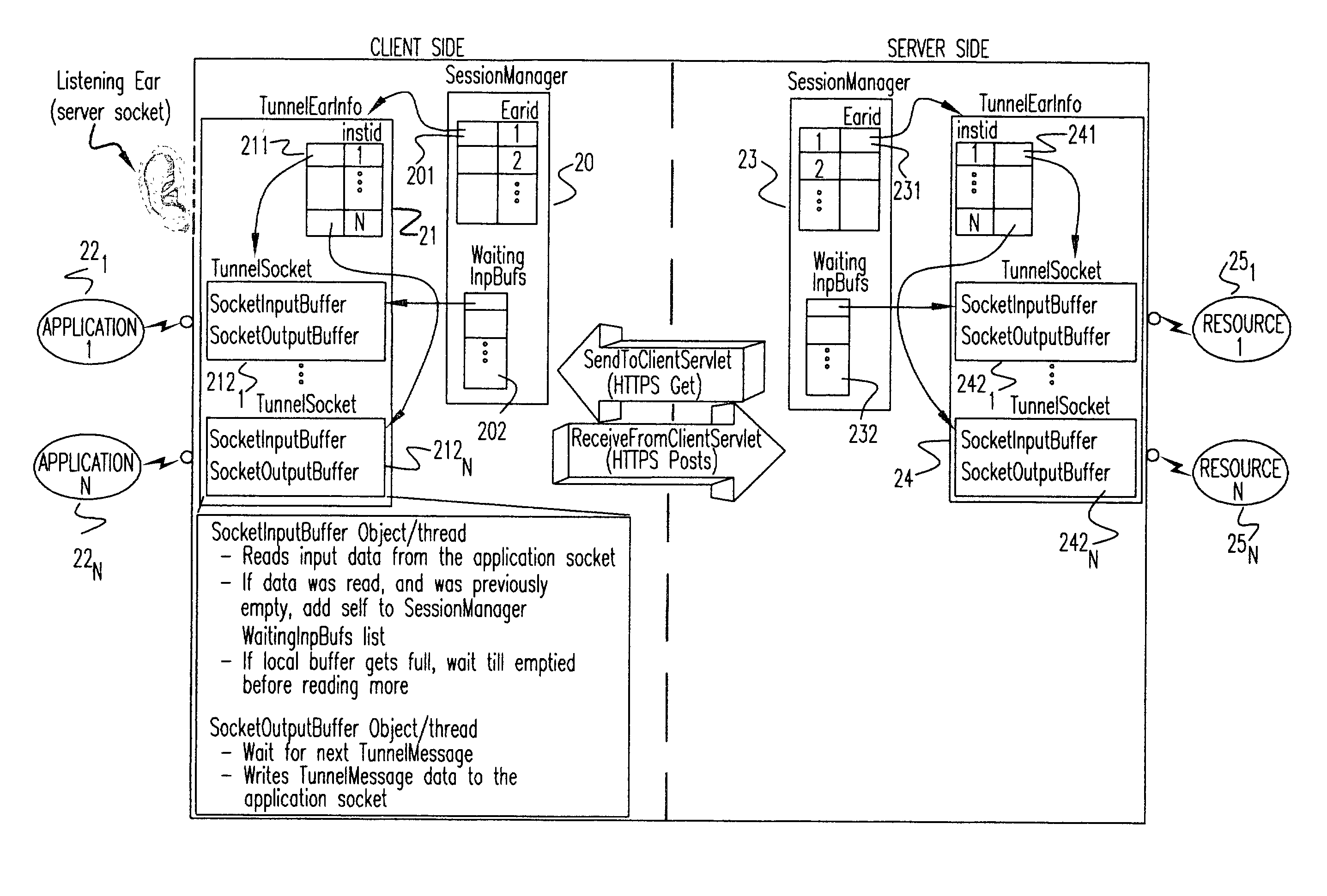Method and apparatus for tunneling TCP/IP over HTTP and HTTPS
a tunneling method and tunneling technology, applied in the field of packet switched network communication, can solve the problems of limiting the order of responses, the synchronous/half-duplex nature of http, and the natural suited protocol for asynchronous/full-duplex tcp tunneling
- Summary
- Abstract
- Description
- Claims
- Application Information
AI Technical Summary
Problems solved by technology
Method used
Image
Examples
Embodiment Construction
[0030] Referring now to the drawings, and more particularly to FIG. 1, there is shown an example of a client 10 behind a firewall 11 and an HTTP server 12 behind a firewall 13. The client 10 supports a plurality of client side applications 14, and the server 12 supports or has access to a plurality of resources 15. In the example illustrated, the firewall 11 rejects all incoming protocols, while the firewall 13 rejects all incoming protocol except HTTPS transfer port 443, represented here by item 16. The firewalls 111 and 13 will typically support a mechanism for passing outbound HTTP and HTTPS connections. These include SOCKS, described above, HTTPProxy and direct pass through. The HTTP server 12 incorporates a servlet engine 17. This servlet engine supports the three basic services with respect to this invention:
[0031] 1. Login (establish tunnel session),
[0032] 2. Receive data from the client and forward it to the appropriate server resource (ReceiveFromClientServlet), and
[0033] 3...
PUM
 Login to View More
Login to View More Abstract
Description
Claims
Application Information
 Login to View More
Login to View More - R&D
- Intellectual Property
- Life Sciences
- Materials
- Tech Scout
- Unparalleled Data Quality
- Higher Quality Content
- 60% Fewer Hallucinations
Browse by: Latest US Patents, China's latest patents, Technical Efficacy Thesaurus, Application Domain, Technology Topic, Popular Technical Reports.
© 2025 PatSnap. All rights reserved.Legal|Privacy policy|Modern Slavery Act Transparency Statement|Sitemap|About US| Contact US: help@patsnap.com



